Presentation
Abnormality seen on CT, for further assessment.
Patient Data
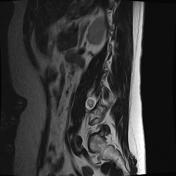

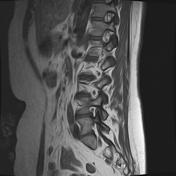

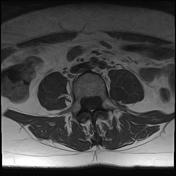

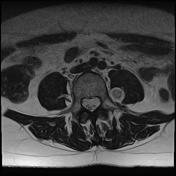



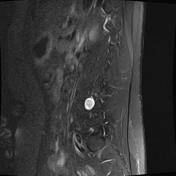

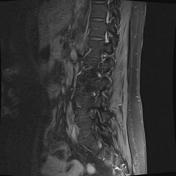

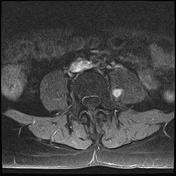

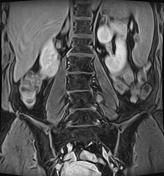

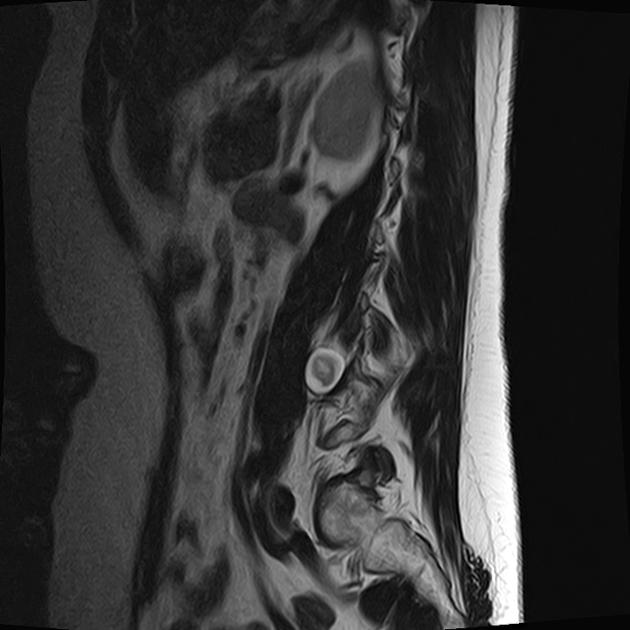
There is a soft tissue mass just lateral to the left L3/4 foramen intimately associated with the L3 nerve root in the lumbar plexus.
The mass demonstrates high signal on T2-weighted sequences, and low signal on T1-weighted sequences. There is a more fluid peripheral component with a solid central component and the lesion measures 2.0 X 1.6 X 1.7 cm.
There is avid contrast enhancement of the central component.
These appearances are consistent with a nerve sheath tumor of the left L3 nerve root within the lumbar plexus in the medial aspect of the psoas muscle. The target appearance on T2 strongly favors a neurofibroma.
Acquired on a 1.5T Toshiba Titan.
Case Discussion
The presence of a target sign is suggestive of a neurofibroma rather than a schwannoma or malignant peripheral nerve sheath tumor, but is unfortunately not pathognomonic.




 Unable to process the form. Check for errors and try again.
Unable to process the form. Check for errors and try again.